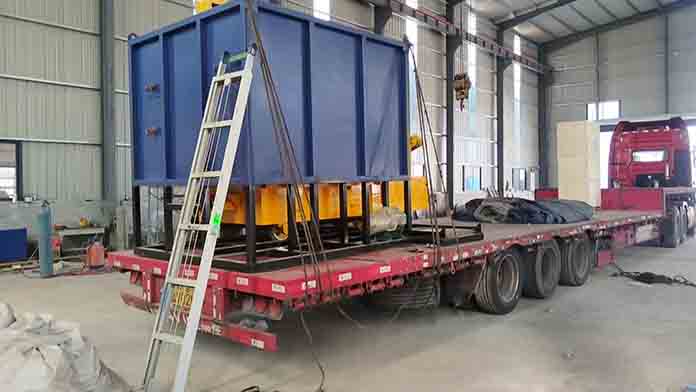What is the difference of Box Furnace and Car Bottom Furnace
Box furnaces and car bottom furnaces are both industrial heat treatment equipment, but they differ in structural design, usage methods, and application scenarios.
Structural Design: A box furnace is typically an electric heating furnace shaped like a box, with its internal space used for placing workpieces to be heated. The furnace generally has a fixed internal space, with heating elements installed around the walls or on the top.
Operation Method: Workpieces are placed inside and removed manually or by robotic arms. Due to its design features, box furnaces are more suitable for small batches and tasks requiring high precision.
Application Range: Suitable for laboratory settings and small-scale production environments for material testing and heat treatment processes such as annealing, tempering, quenching, etc.
Structural Design: The distinctive feature of a car bottom furnace is its carriage (or cart) that can move in and out of the furnace chamber. Workpieces are first loaded onto the carriage, which is then moved into the furnace for heating.
Operation Method: This design makes loading and unloading workpieces more convenient, especially suitable for large pieces or mass processing. It allows for easier continuous operation, enhancing work efficiency.
Application Range: Widely used in industries like steel, metallurgy, and mechanical manufacturing, particularly suitable for situations requiring mass processing. It is especially suited for heat treating large castings and forgings.
In summary, choosing between a box furnace and a car bottom furnace mainly depends on the size and quantity of workpieces and specific production process requirements. Box furnaces are better suited for small-scale, precision-focused applications; whereas car bottom furnaces, due to their ease of handling large or numerous workpieces, are more common in large-scale industrial production.
Energy-saving measures for these furnaces can be considered from various aspects including design optimization, material selection, and operational management.
Energy-saving Measures for Box Furnaces:
Optimal Furnace Selection: Choose the most appropriate furnace type based on the characteristics of the workpiece, production volume, and process requirements.
High-efficiency Insulation Materials: Use low-density, low-specific-heat materials like ceramic fibers to reduce heat loss and improve insulation performance.
Optimized Structural Design: While ensuring furnace body strength, aim to reduce weight and adopt lightweight and fibrous lining materials.
Intelligent Control Systems: Implement automated control systems to regulate the heating process, achieving precise temperature control and avoiding unnecessary energy consumption.
Waste Heat Recovery: Utilize waste heat to preheat air or other media, reducing overall energy consumption.

Exhaust System Optimization:
Natural Draft: Suitable for smaller furnaces or those not requiring high precision temperature control, it reduces power consumption.
Mechanical Exhaust: For furnaces with large exhaust volumes needing stable exhaust speeds, select efficient, energy-saving exhaust fans, possibly integrating variable frequency speed regulation technology.
Pipeline Layout Optimization: Reduce the length of exhaust pipes and the number of elbows, choosing appropriate pipe diameters to lower flow resistance and fan energy consumption.
Waste Heat Recovery Devices: Install heat exchangers or similar devices to utilize flue gas waste heat for preheating combustion air or other uses, thereby improving energy utilization rates.
Preheating Materials: Use flue gas waste heat to preheat incoming workpieces or materials, reducing the required heating energy.
Composite Fiber Insulation: Employ high-efficiency insulation materials like ultra-lightweight, high-strength microsphere vacuum bricks to reduce heat loss.
Automatic Sealing Technology: Adopt automatic sealing designs for the carriage and furnace doors to minimize heat leakage.
Whether for box furnaces or car bottom furnaces, considerations should be made regarding effective energy use during design and scientific management and maintenance should be implemented during daily operations to further enhance efficiency. Additionally, advancements in technology bring about new energy-saving technologies and materials, providing more possibilities for improving the energy efficiency of industrial furnaces.
Common Energy-saving Materials for Box Furnaces and Car Bottom Furnaces
The energy efficiency of box furnaces and car bottom furnaces largely relies on the application of high-efficiency insulation materials designed to reduce heat loss and improve energy utilization.
Ceramic Fibers: Characterized by low density and thermal conductivity, ideal for high-temperature insulation. Ceramic fiber modules or blankets effectively reduce heat loss from the furnace body.
Aluminosilicate Fibers: Similar to ceramic fibers, also a lightweight, efficient insulation material suitable for high-temperature environments.
Nano Microporous Insulation Materials: Due to their unique microscopic structure, these materials significantly reduce thermal conduction, offering excellent insulation performance.
Vacuum Insulation Panels (VIPs): By creating a vacuum environment within the insulation panel, thermal conduction is greatly reduced.
Composite Fiber Insulation Materials: Typically combining ceramic fiber modules with aluminosilicate ceramic fiber blankets, these materials provide good insulation effects and easy installation, contributing to energy savings.
Ultra-lightweight, High-strength Microsphere Vacuum Bricks: A novel type of energy-saving brick used in car bottom furnaces to enhance insulation performance.
Chromium-containing Ceramic Fiber Modules: Compared to ordinary ceramic fibers, these modules withstand higher temperatures, suitable for more demanding working conditions.
Nabatherm Insulation Panels: A high-performance insulation material often used in applications requiring high insulation efficiency.
When selecting energy-saving materials for either box furnaces or car bottom furnaces, factors such as thermal conductivity, heat resistance, and mechanical strength should be considered. Ensure that the selected materials can maximize energy savings while maintaining production efficiency. With technological progress, newer energy-saving materials may emerge, offering more options for enhancing the energy efficiency of industrial furnaces.
BAI KA Copyright © 2025 ALL rights reserved